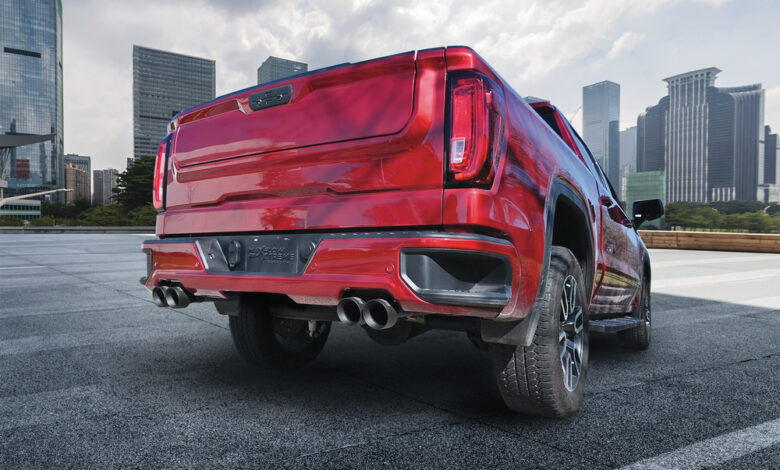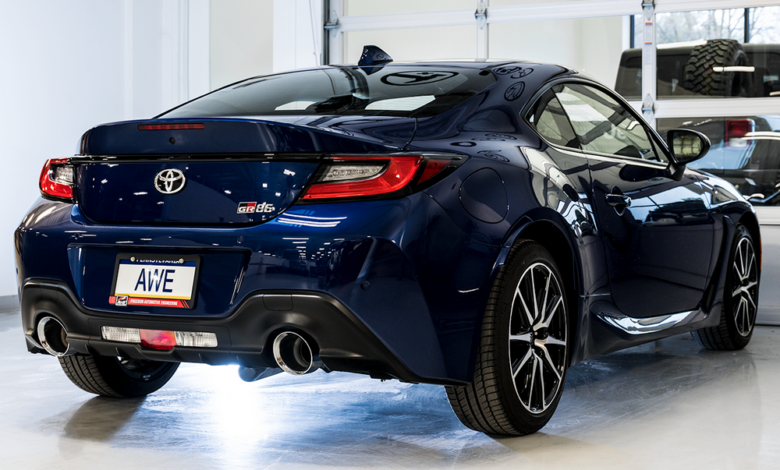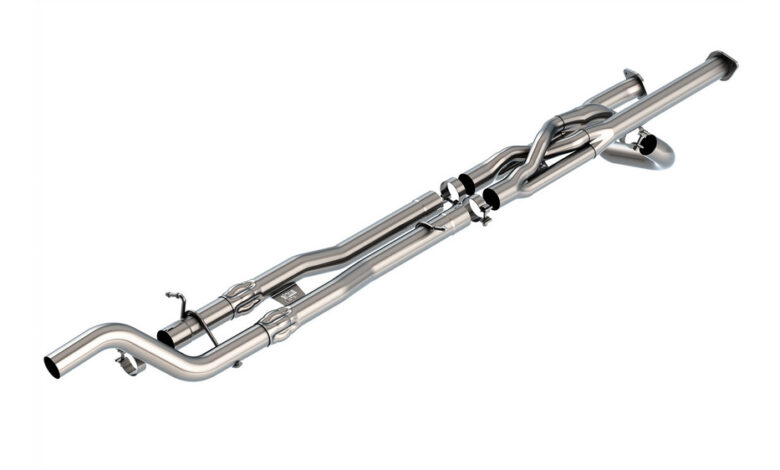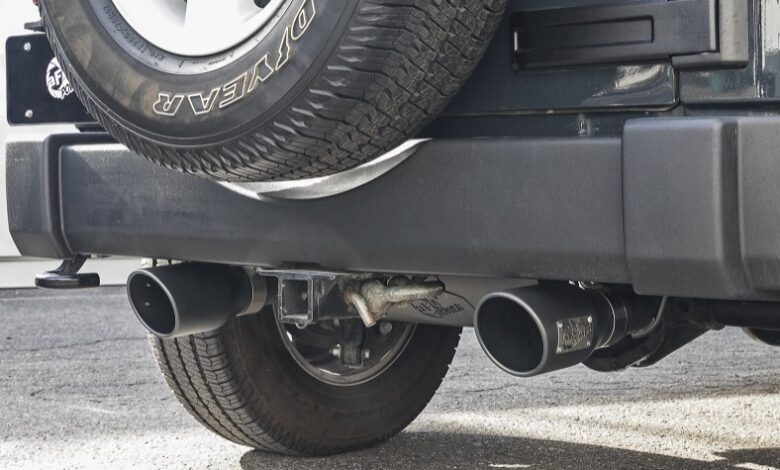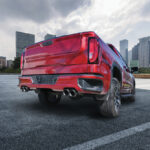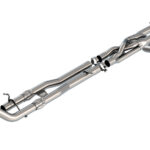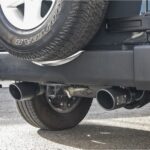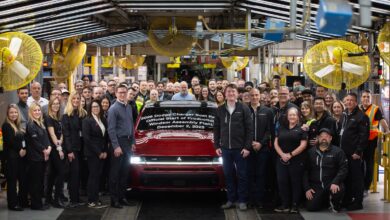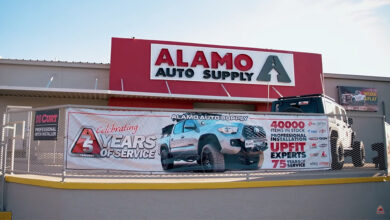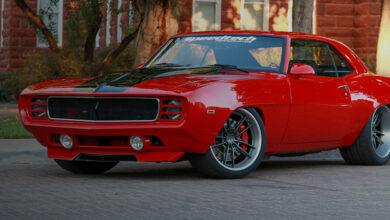Three-for-One: The Benefits of Performance Exhausts
Offer customers power, appearance & sound enhancements.
This article originally appeared in the March 2023 issue of THE SHOP magazine.
With a performance exhaust system, drivers get to check off three boxes on their personalization lists at the same time—performance, appearance and sound.
For shops looking at product lines that can help sell themselves, performance exhausts are a smart place to start. Racers and speed demons enjoy added horsepower and efficiency; street cruisers can make an entrance coming or going; and proud vehicle owners get to show off a variety of attractive tip options.
Manufacturers are happy to share their thoughts on the market, explaining how performance exhaust systems deliver a three-for-one benefit for installation shops.
ADVANCED DESIGNS
Performance exhausts have been a market mainstay for decades. But that doesn’t mean the systems haven’t had to change with the times.
“Vehicle technology continues to evolve,” says Tim Sayers, muffler development manager at Borla Performance Industries. “Engine technology, engine control technology and exhaust system technology are constantly changing. All are significantly different than they were just a few short years ago.”
EPA regulations governing exhaust components, including headers and catalytic converters, differ from state to state, often making it challenging for shops to know what to sell, says Jane Donnelly, marketing director at SpeedFX.
“Axle-back and cat-back aftermarket exhaust systems are always safe options for a shop to recommend because they’re installed behind all OE emissions control components, ensuring that the vehicle remains emissions compliant,” she explains.
An important selling factor these days is quality, notes Jesse Kramer, partner and vice president of marketing at AWE.
“Today’s consumer demands top-shelf stainless steel, no-drone technology, lifetime guarantees, simple installation with perfect fitment, no Check Engine light issues, dyno-proven performance gains, phenomenal tone and a made-in-the-USA product,” he says. “If an aftermarket exhaust brand is not adding an extra layer of ‘hell yeah!’ to what the consumer can obtain from the factory, then it won’t exist for long.”
And all that must be accomplished while dealing with rising costs in raw materials, adds John Gray, director – exhaust product development at advanced FLOW engineering/aFe Power.
CHOICES & CHALLENGES
Shops will have some choices to make when it comes to the brands and types of systems they carry.
“Let’s assume that a shop’s already bought in on the idea that an exhaust must have quality, sound and performance. From there, shops need to be looking at exhaust brands that understand that installations are often at a flat rate,” Kramer says. “If there isn’t a focus on fitment, a shop will be making less per hour, and that doesn’t work. There’s no reason a shop should settle for a poorly fitting brand.”
It also doesn’t have to settle for an aftermarket setup that drones, he adds.
“Anyone can make a car louder. But can a brand do it so that the driver can still use it as a daily driver if they want to? With the right technology and engineering, an exhaust should have no compromises—providing perfect tone, additional power, perfect fitment and longevity.”
Even among the same types of products, differences exist, Donnelly explains.
“Not all stainless steel exhaust systems are created equal. There are varying grades of stainless steel used to manufacture exhaust systems—the two most common being 304 and 409 stainless,” she says. “Take the time to educate your staff and your customers on the differences so that when they are comparing products, they are comparing apples to apples.”
Sound considerations are also important, notes Gray.
“All aftermarket exhausts are louder than stock,” he says, “but there are many options for performance exhaust that will improve the sound and look of the OE exhaust system without violating sound or emissions ordinances.”
Sayers recommends working closely with customers to target exactly what they want and need.
“Not every customer is a candidate for a premium system,” he says. “However, some customers will be willing to purchase a premium system if the shop has done its homework and is knowledgeable about the various manufacturers and their products and is able to convey both product features and benefits to its customers. For example, Borla axle-back and cat-back systems are drone-free. For many customers, this can be the benefit that prompts them to purchase a premium system. But the customers need to be educated about it.”
TRICKS OF THE TRADE
Gearing up to sell to the performance exhaust market means looking for areas of business growth.
One approach, says Gray from aFe Power, is “working with automotive enthusiast groups, whether online or through local events. These groups will form a relationship with shops and help them better serve their customers.”
When those relationships have been established, be sure to know each driver’s full project list, Sayers advises.
“When customers are getting quotes or having other performance products installed, make sure they know that the shop does performance exhaust work as well,” he says. “The customer who is interested in performance products like cold-air intakes, tires, wheels, lift kits, etc. may very well be in the market for a performance exhaust as well.”
Manufacturer information can help answer any questions.
“There’s a huge opportunity for shops to pull in data so that they can easily represent a brand’s catalog online, even if they don’t want to have an eCommerce presence,” says Kramer. “AWE is fully ACES and PIES compliant, which means that we have all of the information that a dealer will need to get information into a catalog.”
Nothing sells an exhaust system more than sound, he believes, “so shops should fully leverage product media. Reach out to manufacturers for videos, sell sheets and content—the good brands will be ready to help.”
Comparison info should include as many systems as possible, suggests Donnelly from SpeedFX.
“Offer multiple brand options at varying price points that will appeal to a broader base of customers on different budgets and deepen your reach in the category,” she advises. “Coordinate exhaust installation services with other routine on-lift maintenance services like tire rotation or discounted oil changes, and provide referral discounts to customers who steer additional exhaust business your way.”
